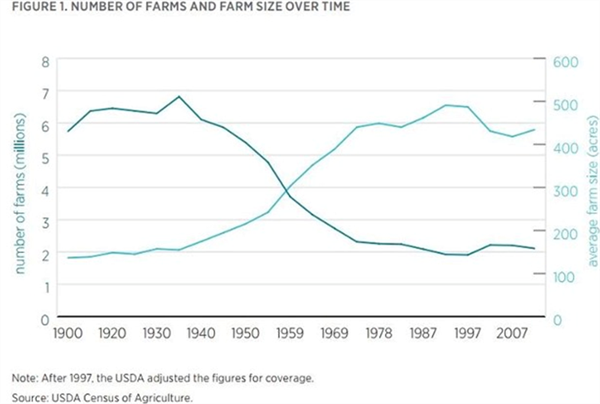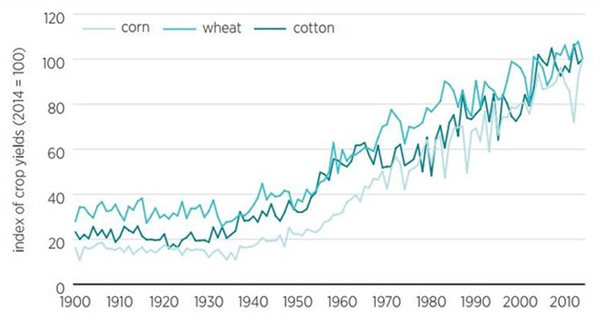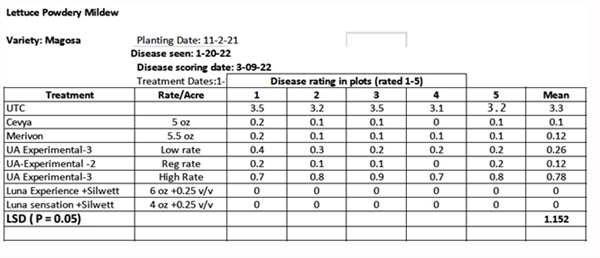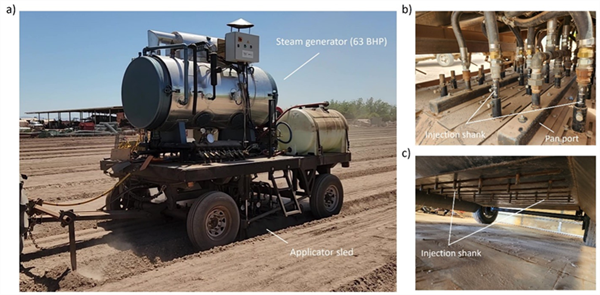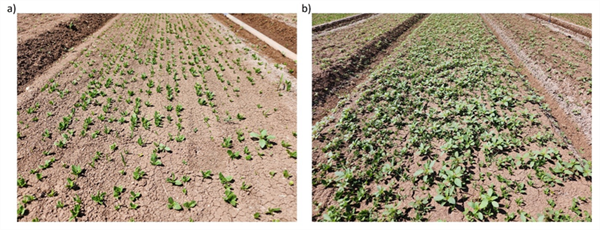-
Nov 1, 2023Thrips Management in Fall Lettuce is Important
Western flower thrips numbers are building and will likely continue as temperatures are ideal for thrips movement and development. It is important to minimize thrips development not only to prevent cosmetic damage to lettuce, but to minimize the spread of INSV. As expected, INSV infected plants have been found again in desert lettuce. We confirmed out first case for the 2023 fall season two weeks ago in organic romaine transplants in Tacna. This is almost the same time as the last 2 years (INSV was first confirmed in 2021 and 2022 in mid-Oct). Additionally, this week we confirmed the presence of INSV in another organic romaine field found a few miles away. Not surprising since the plants originated from Salinas where INSV outbreaks have been occurring the past 3 years. This past season, INSV was comparatively light in Salinas and we’re hoping that this translates to less virus coming into the desert on transplants. So far, we’ve yet to find any INSV infected plants in adjacent direct seeded lettuce. If experience tells us anything though, we can expect to find INSV in surrounding lettuce fields as the season progresses. However, to prevent or minimize further spread to adjacent fields, thorough management of thrips in infected lettuce is advised.
Historically, management of thrips was targeted at preventing damage caused by thrips feeding to marketable lettuce leaves. However, that changed with the discovery of INSV in desert lettuce. It’s important to understand how thrips infect lettuce plants with INSV. INSV infects lettuce two ways. The first is Primary infection where INSV infected thrips adults move into a lettuce field and begin feeding, simultaneously transmitting INSV to otherwise healthy plants. In theory, the greater the number of infected thrips moving into the field, the higher the incidence of primary infection. Secondary infection or spread occurs when populations colonize and thrips larvae acquire INSV by feeding on an infected plant, complete development and emerge as infected adults, capable of transmitting INSV throughout the field or nearby lettuce fields/weeds. Keep in mind, adults only transmit INSV, whereas only larvae acquire the virus from an infected plant. To minimize the areawide spread of INSV this fall and into next spring, PCAs should consider the following recommendations:1. Early and aggressive spray timing in High-risk areas. It is advisable that PCAs preventatively treat lettuce fields early and aggressively in the following high-risk scenarios:
- Lettuce originating from Salinas should be treated before or shortly after transplanting.
- Direct-seeded lettuce fields grown next to, or near, lettuce fields where transplants originated from Salinas should be treated early and aggressively.
2. Focus on minimizing Secondary spread. Because adults can be difficult to control, prevent larvae from completing development to the adult stage and moving throughout the field. It’s hard to prevent primary infection from the outside but minimizing larvae populations should help suppress the secondary spread of INSV if it is present in the field.
3. Using Insecticides Differently. Consider incorporating the following approaches in your IPM programs:- Adding Lannate or Torac with chemical thinners/smart sprays.
- Rotating Minecto Pro or Exirel with Radiant for Lep and/or whitefly control in fall lettuce
- Rotating Beleaf or Acephate with Movento when aphid control is needed.
- All these products have shown to provide control or suppression of western flower thrips larvae.
4. Test symptomatic plants at once. The earlier you confirm INSV in a field the better chance you have of reducing secondary spread within the field and, perhaps as important, to surrounding lettuce in the area. Immunostrip test kits are available, and the UA Diagnostic Plant Pathology Diagnostic Lab can confidentially confirm the presence of INSV on symptomatic plants.
For more information, please go to this link: Thrips and INSV Management in Desert Lettuce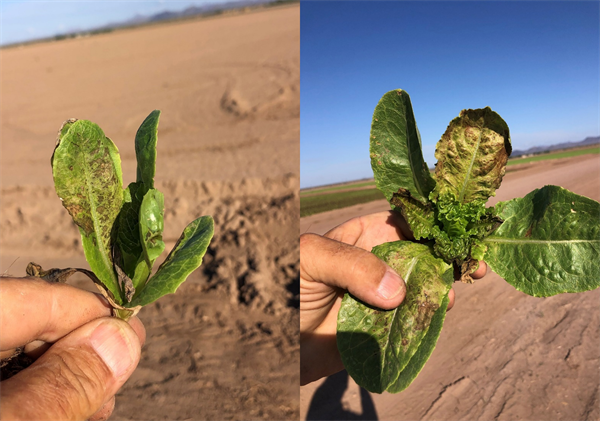 To contact John Palumbo go to: jpalumbo@ag.Arizona.edu
To contact John Palumbo go to: jpalumbo@ag.Arizona.edu



